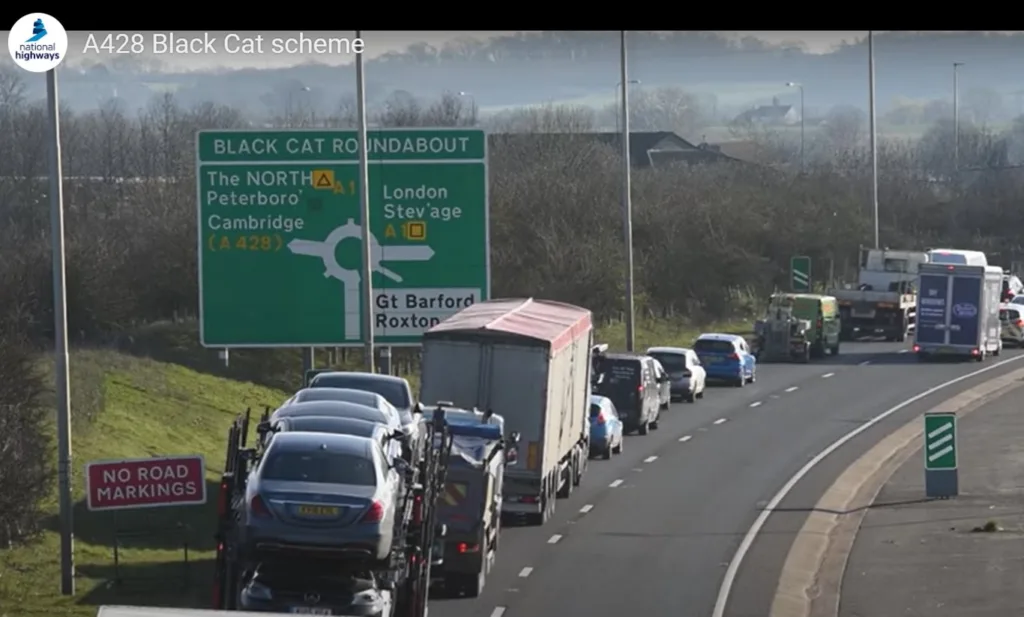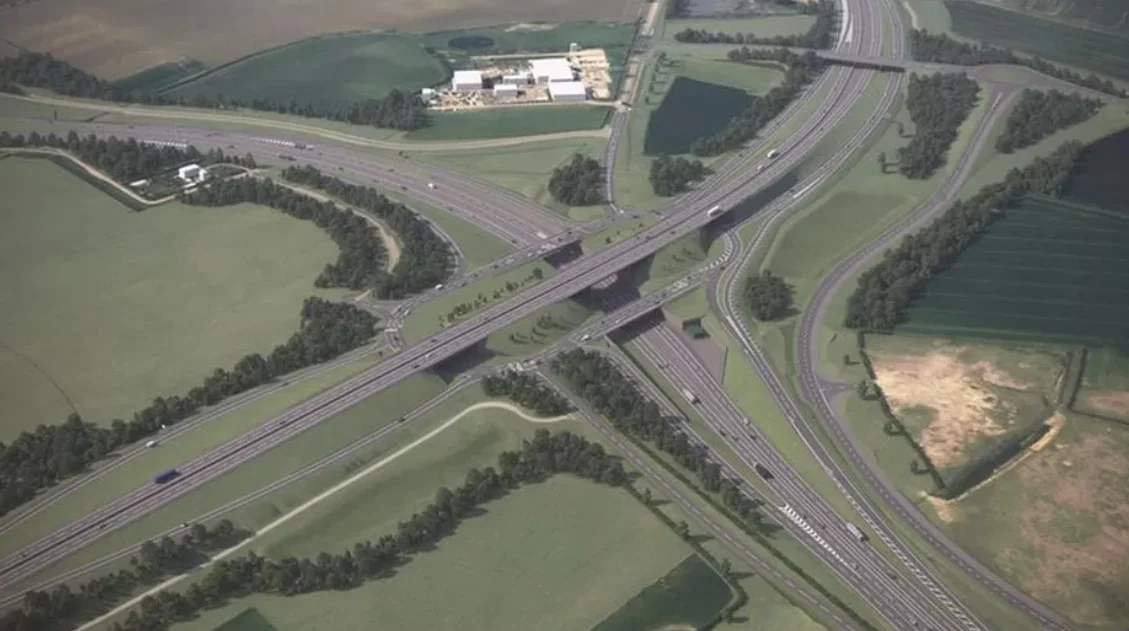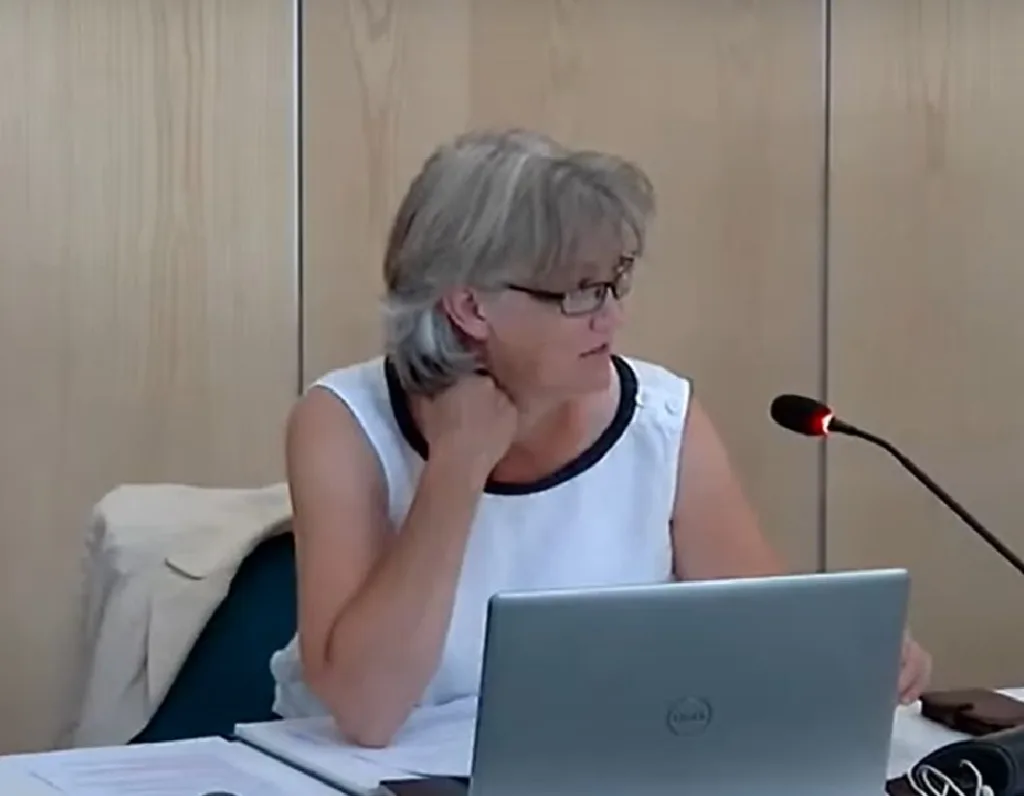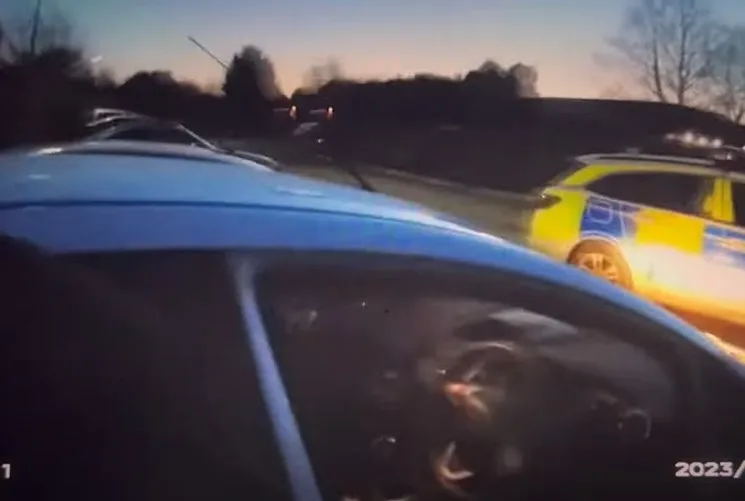The Court of Appeal has thrown out a legal challenge the £1bn A428 Black Cat to Caxton Gibbet improvements.
The court refused Transport Action Network’s (TAN) application to appeal the refusal of permission for a judicial review of the Secretary of State’s decision to grant the A428 Black Cat to Caxton Gibbet improvements formal planning permission.
A National Highways spokesperson said: “We are pleased to say this means that the legal process is now over, and we can start working towards full construction.
“Unfortunately, the legal challenge has disrupted our construction timetable and the start of work has been delayed.”

National Highways say they keen to get started quickly so will continue with preparatory works including archaeology, environmental surveys and diverting utilities as we get ready for full construction.
They hope to move into full construction by the end of the year and expect the road to open in 2027.
National Highways plans will see the creation of a new 10-mile dual carriageway linking the A1 Black Cat roundabout in Bedfordshire to the A428 Caxton Gibbet roundabout on the A428 in Cambridgeshire.
Both existing roundabouts will be upgraded into modern, free-flowing junctions with a new junction added at Cambridge Road, improving access to St Neots and its train station.
The A428 between St Neots and Caxton Gibbet is the only stretch of single carriageway on the strategic road network between the M1 near Milton Keynes and Cambridge.
It is an important link between the M1 and the M11 and joins the communities of Milton Keynes, Bedford, St Neots and Cambridge together.
The spokesperson said that before Christmas they held a series of public information events, attended by over 1500 people.
“The overwhelming feedback was positive towards the improvements from local people, road users and our stakeholders,” said the spokesperson.
“We will host more public information events over the summer and into autumn.”
National Highways say they will release a traffic management plan for all stages of work that minimises impacts on local roads.
The improvements will help drivers save up to an hour-and-a-half on their journeys every week.
Before last Christmas, Transport Action Network director Chris Todd spoke with Babs Michel on BBC Three Counties Radio about the £1bn A428 road scheme and why they submitted an application to the High Court for permission for a judicial review.
An extract of the interview is below.
Q: Are you opposed to this particular scheme or all new road building schemes in general?
What we are opposed to is the current roads policy the Government has, which is when we’ve got a transport problem, the default solution is to go to a big road. And that is a problem given the current circumstances with rapidly increasing climate change.
Q: Anyone familiar and having to drive, the road between Black Cat and Caxton Gibbet, you’ll know how busy it is especially in the rush hour. This scheme, well it makes sense, doesn’t it?
Well on one level it does, but the problem is we have just gone through COP27 in Egypt where people were holding their heads in their hands if you like saying, 1.5 degrees is barely alive. That was the mantra at COP26 in Glasgow, 1.5 is still alive.
It is becoming increasingly out of reach in terms of us stopping runaway climate change, and we’ve got to start somewhere. Yes, one road in itself won’t make a huge difference but this is a bit like an addict saying, just give me one more fix I’ll give up after that.
This scheme is actually the third biggest carbon emitting scheme in the whole of the roads programme, and we want to see that properly examined and properly judged against the climate change targets that we have set ourselves to see how we can do things differently.

We shouldn’t be looking at this through a single lens of road building, we need to look at this as needing a transport solution, better public transport, better rail, better bus, better cycle superhighways for example.
The landscape around St Neots and Cambourne is very much like Denmark where they do cycle those sorts of distances with ebikes and good quality infrastructure. It’s making those changes. That still might require some road building after that, but we need to explore the other ways of moving people around and not just coming default back to a dual carriageway.
Q: Are there any areas where this has been done successfully?
In this country we generally fail to do anything other than that approach unfortunately. What we are seeing is, people might be holding their heads in their hands stuck in a traffic jam but there are people currently who can’t even go anywhere because their bus services and rail services have been completely cut. We need a different approach and what we are trying to do is get some sanity back into the Department for Transport and its way of making travel and life easier for everyone and not just one section of society.
Q: The dual carriageway at Caxton Gibbet connecting with another at Black Cat over some fields, it feels that would ease the pressure, wouldn’t it? Joining one dual carriageway to another?
Well, it’s not just like it’s over a field is it, it’s 10 miles, so it’s a significant piece of road. And yes, on that road it would ease the congestion.
But if you look at National Highways’ own figures it shows there will be a big increase in traffic over the whole of the road network. Now they are not upgrading the whole of the road network, they couldn’t afford to.
So, what you’ll find is that yes on the A428 things will get smoother, there will be less delays, but there will be delays that will increase on the road network around the A428 so you’re not actually solving the problem you’re just shifting it off into lots of different areas.
Q: So, do you think if the Government pumped more money into public transport, is that your solution for this, instead of building more roads and upgrading the A428?
There isn’t a single silver bullet, so it is a combination of better public transport – rail and bus – and it is about encouraging people to walk and cycle more. People say, ‘I can’t cycle huge distances.’ We’re not saying people should cycle 20 miles or so.
In The Netherlands the average distance cycled on some of the cycle superhighways is 9 or 10 miles. With ebikes it becomes very straightforward and easy. So, it’s not unusual for longer distances to be accessible for people with an ebike for example. It’s also about how we build things, new housing developments. In this country we plonk them down, they are called cowpat developments, in the middle of nowhere only accessible by road or car.
We need to be looking at building new communities where they have access to local services with good public transport to start with, not as an afterthought with oh we’ll stick a bus service in there once every hour or something.
So, it’s a whole range of measures in terms of how we look at providing transport and access to people to lead fulfilling lives without having to necessarily own and run a car, which many people cannot afford.
Q: Do you think there needs to be a fundamental change in the way we are thinking? For me, it wouldn’t have occurred to me to cycle 10 miles on an ebike to work. Scientists have been reporting about the threat of climate change since the 20’s. And look at the weather today, I don’t know if I’d want to go out on a bike today.
It’s not one size fits all, it’s not everyone has to cycle everywhere or catch a bus everywhere. But you provide that mosaic of choice and infrastructure which is much lower impact than just building a big new road and actually people will use those other modes, not because they are suddenly green or anything but because they are easier and cheaper.
There will be circumstances on certain days where people will say, ‘I don’t feel like cycling or catching the bus’, which is fine. If that leads to the occasional more congested road people will put up with it because the next time, it’s not quite so extreme people will be using the other modes again.






















